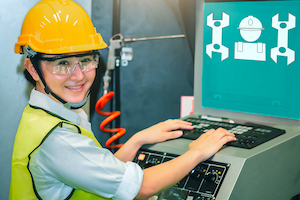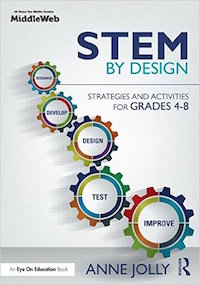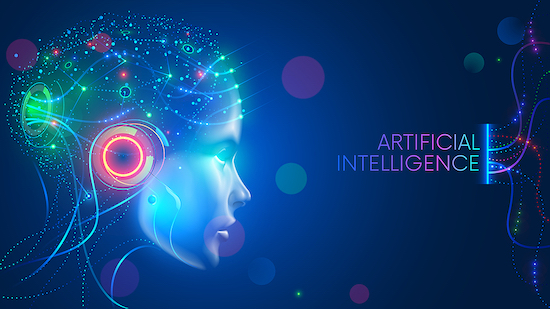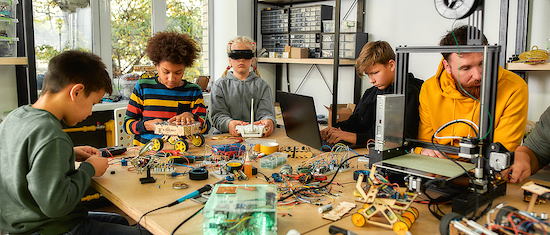How to Prepare for AI? STEM Class, Of Course!
A MiddleWeb Blog

Think about this —
“The things we love about civilization are products of our human intelligence and ingenuity. Developing technology to amplify those qualities can help our world flourish like never before – as long as we manage to keep that technology beneficial and focused.” – Ray Kurzweil.
First, the scary stuff: Humanity 2.0
Ray Kurzweil, Google’s Director of Engineering, recently grabbed my attention with this prediction in a Facebook interview:
“By 2029, computers will have human-level intelligence.” He goes on to say that by 2045 we will reach the ‘Singularity’ – the hypothetical tipping point when technological growth becomes uncontrollable and irreversible. At that time, 25 years from now, according to Kurzweil we will multiply our own intelligence a billion-fold by merging with the artificial intelligence we’ve created. (Say what?!)
Kurzweil actually seems jazzed by that possibility! The human mind will no longer be limited to the biological brain. Our most profound thoughts might be triggered by a nanobot and uploaded to the cloud. As an FYI, Kurzweil is a well-known futurist with a high track record (85%) for accurate predictions.
Those predictions sound undeniably creepy, but they don’t sound nearly as outlandish as they did 10 years ago. And in this post we’re not talking about that level of artificial intelligence anyway – at least not yet.
In truth, Artificial Intelligence (AI) is already starting to feel comfortable to us. We’re surrounded by it, from voice-powered personal assistants to smart phones, smart cars, and smart homes. Alexa plays Jeopardy with us.
And hang on. According to a 2017 ed tech study, the use of AI in education will escalate by 47.5% by the end of 2021. (And given recent events – when even the most reluctant educators have been pushed online and expected to use learning technologies – maybe by even more.)
New stuff is right around the corner, so let’s head to school and investigate AI at the heart of learning.
AI and Education as We Don’t Know It
What’s on the near horizon for AI and schools? Naturally, AI will help manage administrative tasks, from analyzing traffic jams in school hallways and recommending solutions, to arranging smart classroom seating assignments. But the most dynamic implications of AI will occur in student learning. Some predictions for the very near future . . .
All kids will have individualized academic content and lifelike digital tutors. Imagine digital textbooks instantly analyzing each student’s progress and customizing content for each student. These smart textbooks will create individualized study guides, summaries, and practice tests. Kids will get instant feedback and guidance from digital tutors that increasingly respond like real humans by recognizing verbal and nonverbal cues, including gestures and facial expressions.
Teachers will be able to create electronic curriculums (getting there fast) and offer personal online assistance across a variety of devices, including video, audio, and even an online assistant.
Students will be learning in many different locations and situations using all kinds of technologies. (That prediction is evolving even more rapidly!)
The bottom line (or at least the dream): AI will level the playing field for all students, including those with special needs, and mastery learning will finally become a reality. That’s just a sample of what is coming down the pike in some form, and soon. These predictions don’t sound at all far-fetched.
Implications of AI for STEM learning
The future of the workforce and society opens the real can of worms. As Artificial Intelligence redefines what teaching and learning involve, do educators just kick back and rely on AI to prepare our kids for mid-21st Century life? Hardly!
The rapid growth of technology leaves that future in a blur of uncertainty. Our most vital imperative is to develop knowledgeable, adaptable kids who can thrive in ambiguity and fluctuating situations. That’s still a job for humans and STEM teachers are already tackling the challenge.
The world students will enter continues to require the familiar tough-to-teach competencies that STEM teachers work to help them build through engineering challenges. They need to be critical thinkers, creative, team players, empathic, disciplined, and innovative, among other traits.
Most employers will also be on the lookout for culturally sensitive workers with these 9 skills. Perhaps the greatest need is for students to be lifelong learners who regularly study and adapt to the fast-paced changes in their world. (Note: This article from the Pew Research Center gives interesting insights into the projected demands of AI on the future workforce.)
That alone could cause me to break out in a cold sweat, but there’s more. The often-lagging effort to keep teachers and kids equipped with up to date technology jumps to the forefront. Their uncertain new world dictates that students stay abreast of current technology and its applications. Where better than STEM classes? Working together, students can use current technology in exploring, planning, and solving engineering challenges.
An organization of AI leaders has been working with the Computer Science Teachers Association to develop national guidelines for what every K-12 student should know about AI. These should help STEM teachers support students in evaluating new AI technologies while describing the ethical or societal impact issues these technologies raise. This organization (the Association for the Advancement of Artificial Intelligence) spotlights the need to keep AI aligned with human goals for bettering life.
Guiding kids into the future
During their growing-up years, where do students get practice in developing the competencies just described? When do they intentionally consider ethical concerns and social impacts of technologies? In STEM classes, of course!

So now when we scratch our heads and ask, How can we prepare our students for a world increasingly dominated by artificial intelligence? just remember: AI is here and growing more pervasive. It’s time to accept it and prepare our students to deal with it. To accomplish that, perhaps the best thing we can do is to focus them on those qualities that make us human.
Further reading: Futurist and science fiction author Cory Doctorow offers a different perspective about AI’s impact – looking at the possibilities of full human employment and job creation by the government as the world gears up to respond to climate change. Plenty of STEM ramifications in this idea.





































